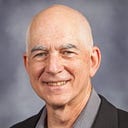Member-only story
8-Point Checklist For How to Reduce Your Bio-Footprint
Reading time: 5–6 minutes
I was in my early 20s when I made a decision to live as “lightly” as possible on this planet. That was almost half a century ago.
There was no big kerfuffle yet about climate change or global warming but there was a strong environmental movement and people getting “back-to-the-land” to grow their own food organically on small homesteads and to live more lightly and sustainably as a reaction to all the environmental drawbacks associated with industrial agriculture.
We were worried about what was happening to our environment. Marine biologist Rachel Carson’s “Silent Spring”, published in 1962, brought our attention to the damaging side effects of all those years of DDT spraying that were starting to affect our daily lives in unexpected ways.
There was also lots of talk about ending world hunger and death by starvation and looking for ways both scientific and political to do that.
So back to me in my early twenties. In the United States, the first of two game-changing books had just been published, “Diet for a Small Planet” by Frances Moore Lappe in 1971 and 2 years later, its companion book “Recipes for a Small Planet” by Ellen Buchwald Ewald in 1973.
